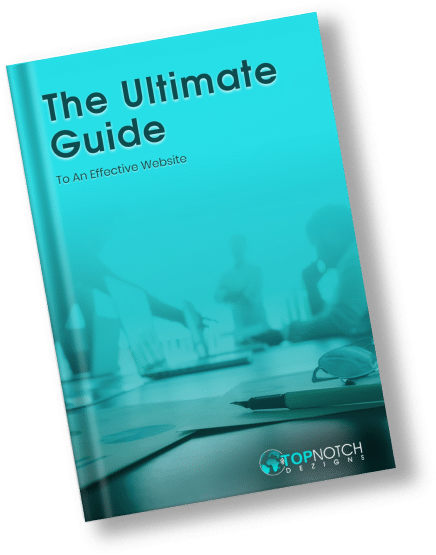There’s an old saying that talks about how you may take a horse to water, but you can’t force it to drink. This is also relevant when advertising products to customers online, especially those who aren’t actually on the market for them. No amount of visibility or ad money may guarantee a conversion when there’s a lack of intent to buy, and this is where reaching out to custom intent audiences enters the picture.
Targeting the wrong audience is a common problem when it comes to boosting digital marketing campaigns. Given that several ads advertise to the wrong audiences, it often results in squandered or poorly optimized ad money.
Google is one of the foremost players in online advertising, with its Google Ads platform (previously AdWords) leading the pack. This tech giant knows a thing or two about digital ads and has the data to back its results. Besides, it is always looking to ramp up the efficiency of its ad tools and campaigns using the valuable information it keeps gathering. One prominent feature is Google’s custom intent audiences/segments, which maximizes conversions by leveraging search intent data.
Table Of Contents
Custom Affinity vs. Custom Intent vs. Custom Audiences
Previously, you could reach out to target audiences via Google Ads by defining two customizable offerings that came in the form of Custom Affinity and Custom Intent. These are no longer on offer as standalone tools and you get to go with Custom Audiences instead.
Custom Affinity
Custom Affinity targeted a broader audience group with interests similar to what advertisers defined. You provided keywords or URLs related to your product or service, and Google Ads found people who had shown interest in those areas. You could think of custom affinity audiences as broad categories, such as people interested in fitness or traveling.
Custom Intent
This offered a more targeted approach. You defined keywords or URLs that indicated someone was actively looking to buy something related to your offerings. Here, you would target keywords like “shoes for long-distance runners” or URLs of competitor websites selling running shoes. It was like targeting a specific sub-category, such as people actively searching for long-distance running shoes.
Custom Audiences
Some time back, Google decided to club Custom Intent and Custom Affinity into a more streamlined workflow, and Custom Audiences is a result of the migration. It allows you to target audiences by using suitable keywords, URLs, and apps.
Note: Hereon, any reference to Google Custom Intent Audiences talks about Custom Audiences as a whole. In addition, Google now refers to audience types (custom, intent, and affinity) as audience segments.
Looking to Create a Marketing Strategy?Request a Quote
What’s the Key Functionality of Google Custom Intent Audiences?
Google custom audiences/segments are customizable for Google, YouTube, and Google Display Network ads. This function helps advertisers target consumers who have the intent to make purchases from specific segments. Instead of honing in on the general interests and demographics of users (a shot in the dark), it goes one better.
What Is Custom Intent Audience?
A custom intent audience refers to a specific group of potential customers identified by their online behavior that shows they are interested in products or services similar to what you offer. Google custom intent audience-based advertisements target people who are currently searching for specific products or services. Adding relevant keywords, competitor URLs, and even competitor apps in Google custom intent audiences helps advertisers reach the right buyer, not just regular internet users.
Digital marketers tend to optimize Google custom audiences using:
- Searched-for keywords. The keywords internet users search for online are revealing. When customers enter keywords like “pet gerbil for sale” or “best plumber near me,” it’s likely they’re looking to purchase these goods or services. Advertisers may use custom intent keywords such as these in Google Ads to target these audiences.
- Browsing activity. The browsing patterns of specific internet users are another indicator of intent to buy. When internet users visit a competitor’s website, they’re likely researching or buying similar products or services to yours. Advertisers may input competitor URLs in Google custom segments to reach out to their competitors’ customers.
- App downloads. The kind of apps a customer downloads and purchases from may also be revealing and useful. Those who regularly use competitor apps are prime audiences for your ads. Advertisers may optimize Google custom intent audiences to target these customers.
Which Value Proposition Does Custom Intent Audiences Offer Advertisers?
Using Google custom audiences/segments to optimize ad campaigns provides plenty of benefits. Not only may advertisers improve their conversion rates, but they may do so without spending excessively on Google Ads.
The top benefits of using Google custom segments include:
- Saving money by not displaying ads to irrelevant audiences who don’t have intent to buy.
- Advertising to customers who are ready or researching goods and services to buy.
- Reaching new customers who might not have fit the expected audiences previously set in affinity ads.
- Competing for customers directly with those selling similar goods and services.
- Displaying ads to customers who have recently searched for similar items on mobile apps and websites.
Google Custom Segments/Audiences Best Practices
Google custom audiences/segments is an invaluable tool, helping advertisers, businesses, and individuals cut down on ad spending while achieving more profitable ad campaign results. Instead of paying for visibility, Google custom segments place ads where they’re more likely to convert.
Sure, the audiences you’re targeting with Google custom audiences are more likely to be on the market to buy, but it’s still advisable to follow a few best practices when setting up your campaigns.
Prioritize Google Ad Goals
Businesses advertise for many reasons, not just to sell goods or services. Increasing brand awareness, encouraging walk-ins, or attracting attention to a new product or service are a few examples. If all you want to do is promote your business, it may not be necessary to use custom intent audiences.
In this case, you may reach out to an affinity audience by targeting internet users based on their general interests for better results. It will ensure more of the general public gets to view your ads. Plus, it adds an element of affordability if your ad campaign is pay-per-click.
The custom intent audience function is better suited to increasing eCommerce sales, not so much to get your brand out there. As optimizing your ad spend takes place only by showing ads to audiences searching with the intent to buy, your ad visibility might be less broad.
Read Up On Google Custom Audiences
Google custom intent audiences may be foreign to some Google Ads users who haven’t explored it yet. As with setting up any new type of ad campaign, be sure to read up on how it works. Following instructions and tips will ensure you avoid making common mistakes that may affect the efficacy of your campaign.
There are many excellent offline and online resources* you may use, including:
- Google’s guide about Custom Segments.
- Google’s guide about Audience Segments.
- The Semrush blog post about Audience Segments.
- The “How to Set up Google Custom Intent Audiences” section in this post.
*Be sure to always consult the latest resources to ensure the information is up-to-date as Google Ads functionalities are prone to change.
Looking to Grow Your eCommerce Revenue?Request a Quote
Do Your Keyword Research
The Google custom audiences function helps advertisers target internet users with intent to buy. However, do you know which keywords are the best to add to your unique campaigns? Doing adequate keyword research beforehand is vital to ensure the best ad campaign engagement and results.
You may use a number of free and paid tools such as Google’s Keyword Planner, Ahrefs Keyword Generator, and the Semrush Keyword Research Tool. Look for top-ranking keywords that are also moderate to low difficulty to ensure maximum exposure.
Know Your Ad Types
You may create different types of digital advertisements using Google Ads. Display ads, video ads, product listings, native ads, and social media ads are some examples. Learning about ad types and knowing which are best for your Google custom segments/audiences campaign will ensure its efficacy.
You also need to understand that Google Ads work on a pay-per-click model. This form of advertising can help bring costs down because you only pay when someone clicks on your advertisement.
Invest in SEO
PPC ads are a popular option because of their low cost. However, you may also increase the efficiency of your Google custom segments ads by paying due attention to search engine optimization (SEO) on these and your linked website, product listings, or app. Using high-quality ads may lower their cost-per-click (CPC) by improving their Google Ads quality score.
SEO extends to your written Google custom audiences ad content, including captions, descriptions, and calls-to-action (CTAs). Visuals such as the quality of your ad images and relevance matter too. The quality of ads along their SEO and PPC bid ranges also work together to improve the likelihood of these winning a bid for ad space.
Determine Your Ad Bid Ranges
If you’re wondering how much Google Ads cost, know that bid ranges vary based on different factors. For instance, each industry has its ideal cost-per-click (CPC) values. If you set your ads for less, they may struggle to win bids and get seen by potential buyers. On the other hand, selecting the correct PPC bid values for your industry will ensure your ad campaigns reach Google custom audiences.
Ideally, you should hire a digital marketing company to help set up advanced campaigns. It may assist you in making the right decisions regarding keywords, URLs, and apps to include, as well as how much to spend on your PPC campaigns. It can also help you set bid ranges and come up with effective internet marketing campaigns.
Study Your Competitors
Since Google Ads’ custom intent segments may help you target competitors’ customers in campaigns, you need to know who these are. Search online for the top companies in your niche using the keywords you wish to use in your ad campaigns.
Save each competitor’s URL and find out if they have an app. You may use this information to define your Google Ads custom audiences later on. You may use these competitor URLs and unique page URLs to generate top-ranking keywords on various paid and free keyword generators.
Optimize Your Ads
Ad content, including graphics, photographs, CTAs, and descriptions, is a vital component of ads. It’s not only important to optimize your ad audiences using Google Ads custom audiences to see results, but you also need to ensure the content in your ads is appropriate for the purpose and audience.
If you’re trying to sell coffee beans, an ad talking about your coffee shop with a photo of a cappuccino probably isn’t going to cut it. You need to ensure you highlight the product with eye-catching visuals, animations, or videos, and make the most of content marketing.
Set Up Your Custom Audiences Separately
You may generally use more than one Google custom segments configuration on an ad campaign. There’s no necessity to put all of your keywords in one basket. Separate and group similar keywords together.
You may create a singular Google custom audiences configuration for each grouping. Then, mix and match these with ads. Separating Google custom segments configurations also allows you to test out and better define what does and doesn’t work using Google Ads data insights.
Learn Google Custom Segments Audiences Settings
The Google Ads custom segments/audiences function allows you to customize your audiences to target internet users intending to buy. However, knowing which types of keywords and URLs are best to use in your campaigns is important. Here are some examples of custom intent keywords and URLs.
- Keywords such as “buy coffee beans,” “order groceries online,” and “hire a restaurant website designer.” Adding specific terms like “buy online,” “organic,” or “near me” may also help narrow down your audience.
- Competitor URLs relevant to your industry, region, and company, like coffeebros.com or https://www.starbucks.com/, are another way to optimize Google custom audiences.
- Adding apps that belong to your main competitors, such as the Nike or Michael Kors apps, is also ideal.
Looking to Boost Your Business Online?Request a Quote
How to Set up Google Custom Segments/Audiences
Setting up Google custom audiences/segments for your Google Ad campaigns is easy. All you need to do is follow a few simple steps that will help you reach out to internet users with the intent to buy your goods and services.
Navigate to Google Custom Audiences
After logging into your Google Ads account, click on “Campaigns,” followed by “Audiences, Keywords, and Content.” Then:
- Under “Audiences Segment”, click “Edit Audience Segments.”
- Click “Select an Ad Group,” followed by using the list of campaigns and ad groups that appears to make a selection.
- Choose the audience segments you wish to target.
- Save the settings.
Name Your Custom Audience
On the Google Ads new segments page, you may set the name of the new audience. You may create and save multiple audiences, which you may use across various ad campaigns going forward. It’s a good idea to name each in order to differentiate them later on.
Choose Your Targeting Option
Once on the audiences page, you will see different settings. One setting is labeled “Include people based on their:” and allows you to choose who you target. The targeting options in the drop-down include “Google search terms” and “In-market keywords.”
For advertisers looking to target potential buyers, “in-market keywords” is the best option. In-market keywords or segments target internet users who Google has identified as displaying intent to buy, perhaps by searching keywords or websites selling goods and services.
Enter Your Keywords and URLs
After setting up your new custom audience, it’s time to fine-tune it. The URLs and keywords you have from your research come in handy at this stage. Be sure to compile a list of these prior to setting up any custom segments. You may also use the “Ideas” tab to get more suggestions if you just have one or two URLs and keywords on hand.
Save Your Custom Audiences Configuration
After adding keywords and URLs and otherwise setting up your Google custom audiences, you may save the configuration. To save your Google custom audiences, click “Create” at the bottom of the page. You may now use your new Google custom segments configurations in your ad campaigns or come back and edit it, if necessary.
Conclusion
Using unfamiliar advertising tools may be quite a challenge, especially if you’re not familiar with them. Google custom segments/audiences builds on data Google Ads collects from its platform. While the older “affinity audiences” was great at targeting like-minded individuals broadly, it wasn’t the best at converting, mainly because the affinity ad audiences aren’t necessarily looking to buy.
Google custom intent audiences helps advertisers effectively narrow down their audience, cut ad spending, and increase conversions by targeting consumers who are ready to buy. If you’re unsure about how to handle your Google custom audiences/segments campaigns, partnering with a digital marketing company might be in your best interest.








